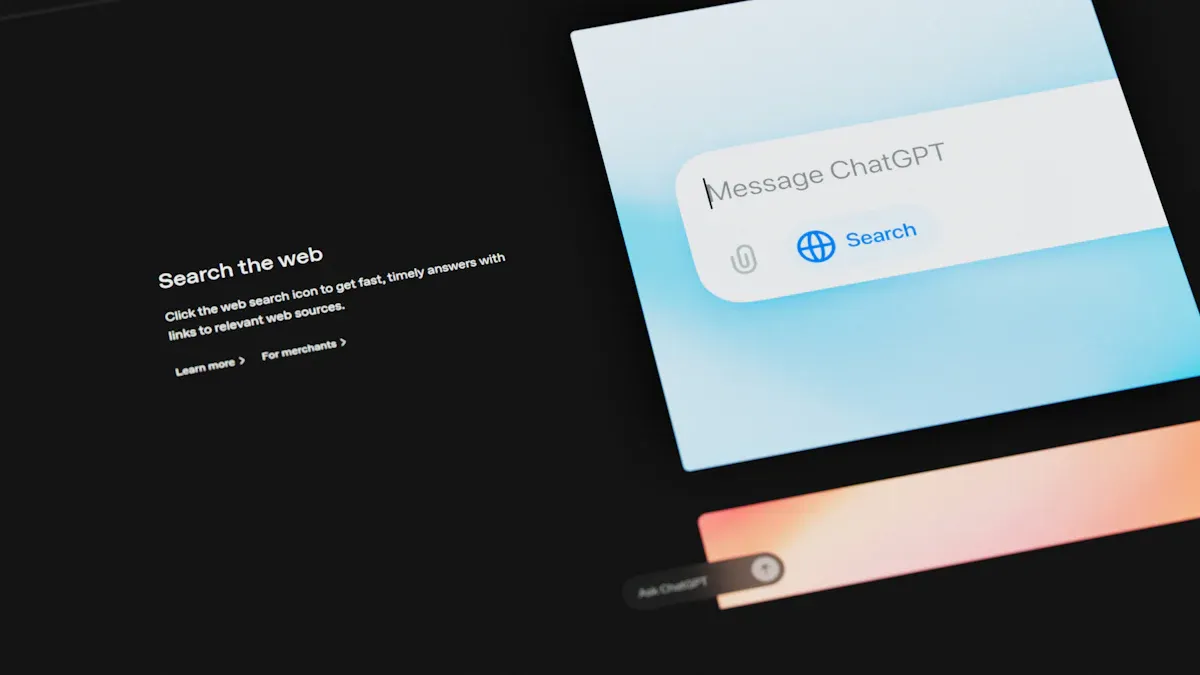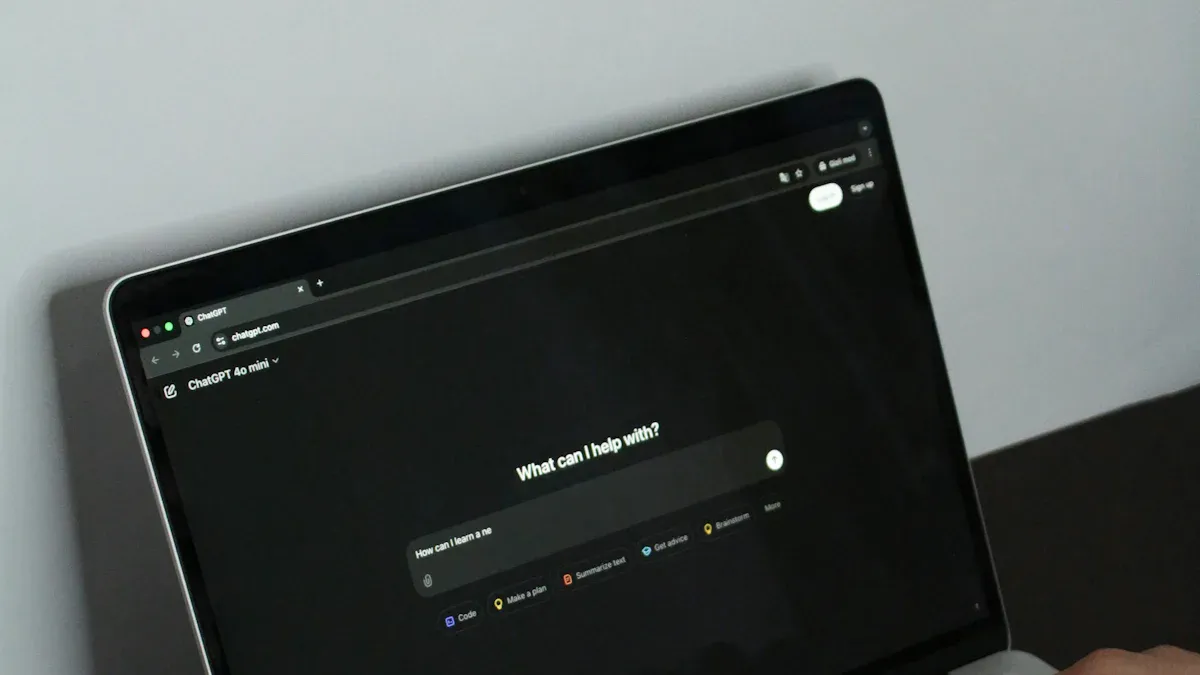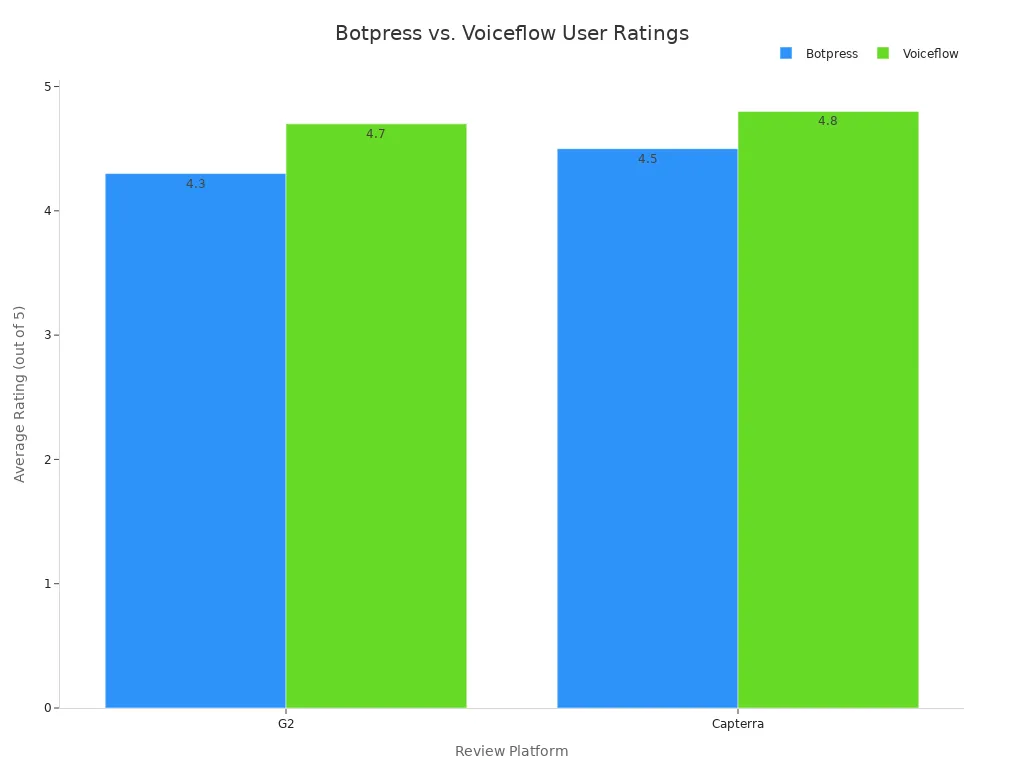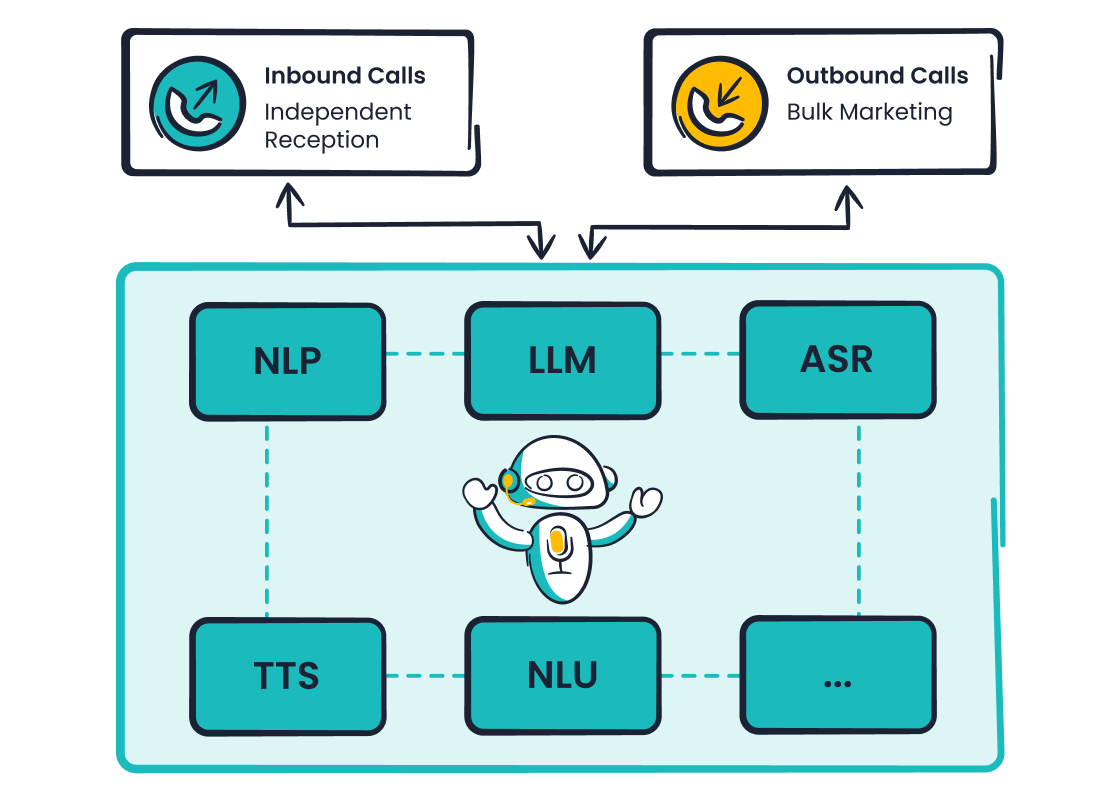Choosing Your Chatbot Botpress vs Voiceflow

Choose Voiceflow for collaborative, no-code design focused on conversational AI. Select Botpress for developer-driven, highly customizable solutions. With the AI chatbot market growing, this chatbot platform comparison helps you decide. Over 54% of companies now use AI tools like a chatbot.
| Factor | Botpress | Voiceflow |
|---|---|---|
| Best For | Developers needing control with Botpress. | Designers and teams needing speed with Voiceflow. |
| Ease of Use | Steeper learning curve for Botpress. | Easy, visual interface for Voiceflow. |
| Customization | Deep code customization with Botpress. | UI-based customization with Voiceflow. |
| Key Strength | Open-source power (Botpress). For integrated solutions, Sobot offers the Sobot call center and Sobot AI. | Rapid prototyping (Voiceflow). |
| Pricing Model | Usage-based pricing (Botpress). | Seat-based pricing (Voiceflow). |
A Chatbot Platform Comparison

This chatbot platform comparison explores two leading tools with different philosophies. One platform empowers designers, while the other gives developers ultimate control. Understanding this core difference is key to choosing the right tool for your project. This detailed chatbot platform comparison will guide your decision.
Voiceflow: The Collaborative Design Canvas
Voiceflow positions itself as a collaborative hub for building conversational AI experiences. It prioritizes ease of use, making it ideal for teams that include designers, writers, and product managers. The platform's strength lies in its visual, no-code conversational AI approach. With Voiceflow, teams can design, prototype, and launch agents quickly.
The intuitive interface of Voiceflow removes technical barriers. This allows teams to focus on creating great user experiences. Key features that make Voiceflow a top choice for collaborative design include:
- Visual Workflow Builder: Teams can design complex conversation flows using a simple drag-and-drop interface without writing any code.
- Built-in Collaboration: Voiceflow allows multiple users to leave comments, share flows, and work together securely within the same project.
- Rapid Prototyping: The platform makes it easy to build and test a chatbot, helping teams iterate on ideas quickly.
Ultimately, Voiceflow is built for speed and teamwork. The visual nature of Voiceflow ensures everyone on the team can contribute to the final product. For projects where design and user experience lead the way, Voiceflow is an excellent choice.
Botpress: The Developer's Open-Source Engine
In contrast, Botpress is an open-source engine built for developers. While Voiceflow offers a guided experience, Botpress provides a powerful and highly customizable framework. Developers who need deep control over their AI agent's architecture and integrations often choose Botpress. The platform's open-source nature means you can host it yourself and modify the core code.
Botpress is not a simple tool, but its flexibility is unmatched. This power enables the creation of sophisticated, enterprise-level AI solutions.
For example, companies use Botpress to build complex systems for hyper-personalized customer service, internal HR and IT support, and even healthcare navigation. A Botpress agent can authenticate users, access backend databases, and perform complex automated tasks.
This level of customization makes Botpress a go-to for technical teams. If your project requires deep backend integrations, full data control, or unique AI functionalities, Botpress delivers the necessary tools. The Botpress platform empowers developers to build exactly what they envision without limitations. Botpress truly shines in developer-led environments.
Core Features of Each AI Agent Platform

Understanding the core features of each AI agent platform is crucial. This chatbot platform comparison highlights the key differences in their tools and capabilities. Both platforms provide powerful features for building a modern AI agent.
Visual Builder and Ease of Use
Voiceflow excels with its highly intuitive visual builder. Teams can design complex conversational AI flows using a drag-and-drop canvas. This approach makes Voiceflow very easy to use, even for non-technical team members. User reviews reflect this strength. Voiceflow consistently earns higher ratings for usability on platforms like G2 and Capterra compared to Botpress.

Botpress, on the other hand, presents a steeper learning curve. Its interface is powerful but designed with developers in mind. While Botpress is a capable AI agent platform, it requires more technical knowledge to master its features.
AI, NLU, and Knowledge Bases
Both Voiceflow and Botpress integrate powerful Large Language Models (LLMs) to drive their AI capabilities. This allows each AI agent to understand and respond to users intelligently.
- Voiceflow supports models from Anthropic, OpenAI, and Google.
- Botpress integrates with OpenAI, Anthropic, Groq, and Hugging Face models.
Each platform uses these AI models to power its Natural Language Understanding (NLU) and manage knowledge bases. This ensures your AI agent can answer questions accurately and engage in natural conversation. The core AI features are strong in both Botpress and Voiceflow.
Customization and Extensibility
Here, the platforms diverge significantly. Voiceflow offers customization through its user interface, allowing teams to adjust an AI agent's personality and responses without code.
Botpress provides unparalleled advanced customization through code. Developers can:
- Execute dynamic API calls to fetch real-time data.
- Post-process LLM responses to format them correctly.
- Implement custom authentication flows for users.
This deep control makes Botpress the ideal choice for projects requiring unique functionalities. The ability to modify nearly every aspect of the AI agent is a key strength of Botpress.
Integrations and Deployment
Deployment options also differ. Botpress is an open-source platform, giving you the choice to self-host it on your own servers for complete data control. Voiceflow is a cloud-only solution.
Both platforms offer strong integration capabilities. Voiceflow connects easily with channels like:
- Slack
- Microsoft Teams
- Twilio SMS
Botpress also provides extensive integrations, often configured through code for more complex connections. Your choice depends on your need for self-hosting versus the convenience of a managed cloud service from Voiceflow or Botpress.
The All-in-One Alternative: Sobot
While Botpress and Voiceflow offer powerful tools for building a standalone AI agent, some businesses need a more integrated solution. Sobot presents a comprehensive, all-in-one contact center platform. Its mission is to enhance customer interactions and improve operational efficiency for the modern enterprise. This approach goes beyond a single AI chatbot to create a unified customer experience.
Beyond a Single Bot Builder
Sobot provides a complete ecosystem for customer communication. It combines multiple tools into one platform, which helps teams work more efficiently. Instead of connecting separate services, an enterprise can manage all interactions from a single hub. Key features include:
- Live Chat Omnichannel: Unifies messages from all channels into one workspace.
- Ticketing System Collaborative: Automates workflows and helps teams manage customer issues together.
This integrated design ensures that every AI agent has the full context of a customer's journey. It creates a seamless flow between automated and human support.
Sobot Voicebot for Enterprise Needs

For large-scale enterprise operations, the Sobot Voicebot delivers a human-like conversational AI experience. This advanced AI agent is designed to automate over 90% of voice interactions, a capability that sets it apart. The voicebot uses powerful AI to understand and respond to customers naturally. This level of automation is crucial for an enterprise looking to reduce costs and increase team productivity. The AI agent handles routine calls, freeing human agents for more complex problems.
Integrated Customer Contact Solutions
Sobot’s strength lies in its ability to unify multichannel communications. The platform integrates its AI agent, chatbot, and live support features to deliver consistent service. This creates a better user experience across every touchpoint.
A real-world example is OPPO, a global smart device company. By implementing Sobot's AI, OPPO achieved an 83% resolution rate for its chatbot. This success also led to a 94% positive feedback score, showing the value of an integrated AI solution for a major enterprise. Sobot’s features provide a powerful framework for any enterprise aiming to elevate its customer interactions.
Pricing Models: Botpress vs Voiceflow
The pricing models for Botpress and Voiceflow reflect their different philosophies. One platform charges based on team size, while the other focuses on user engagement. Understanding this distinction is essential for budgeting your project and choosing the right tool. This comparison breaks down each pricing approach.
Usage-Based vs. Seat-Based Costs
Voiceflow primarily uses a seat-based pricing model. This means companies pay a subscription for each team member who needs to build or edit a project. While viewing is often free, the cost for this pricing model multiplies as more collaborators join. This approach can become expensive for large teams working together.
In contrast, the Botpress pricing is usage-based. Botpress ties its costs to the number of monthly active users your chatbot interacts with. This pricing structure makes Botpress a cost-effective option for small teams that anticipate high volumes of user traffic. The Botpress subscription cost scales with your audience, not your team size.
Comparing the Free Tiers
Both platforms offer free tiers to help users get started. The Voiceflow free plan, called the 'Starter' plan, provides one editor seat and 100 credits per month. This allows a single user to explore the platform's features on a small scale. The Voiceflow pricing for this tier is zero, but the limitations reinforce its per-editor model.
The Botpress free tier is also generous, allowing users to build and deploy a chatbot. The Botpress pricing for its free plan is based on its usage model, giving users a set number of free monthly active users. This lets developers test a Botpress agent with a real audience before committing to a paid plan.
Understanding Cost at Scale
For large companies, both Botpress and Voiceflow offer custom enterprise plans. The Voiceflow enterprise pricing is tailored based on the number of editor seats and AI usage. This plan provides unlimited editors, premium support, and other advanced features.
Botpress also provides an Enterprise plan with custom pricing. It includes benefits like white-glove onboarding, dedicated support, and options for private cloud or on-premise hosting. This makes the Botpress pricing model adaptable for large-scale, secure deployments. The Botpress approach at the enterprise level continues to offer powerful, developer-focused solutions.
Use Case Scenarios and Recommendations
Choosing the right platform depends entirely on your project's goals and your team's skills. A tool that works perfectly for one team might slow down another. This section provides clear recommendations for specific scenarios. It helps you decide whether Voiceflow or Botpress is the better fit for your needs.
When to Choose Voiceflow
Teams should choose Voiceflow for projects that prioritize collaborative design and rapid prototyping. The platform excels in environments where designers, writers, and product managers work together on a conversational AI project. Its visual, no-code interface makes it accessible to non-technical team members.
For example, Rocket Mortgage used Voiceflow to speed up its design workflow. A designer replicated their entire chatbot in Voiceflow within one week. This allowed the team to send prototypes to partners for quick feedback, streamlining the approval process.
Product teams use Voiceflow to test ideas before committing to development. The platform's features allow for high-fidelity prototyping that mimics a live experience. This helps teams gather valuable user insights early. Key use cases for Voiceflow include:
- Rapid Prototyping: Teams can quickly build and test an AI agent, making changes on the fly based on user feedback.
- Collaborative Design: Multiple stakeholders can comment on and contribute to the conversation flow in a single, centralized platform.
- Consumer Voice Applications: Voiceflow is specifically designed to build applications for voice assistants. Many top companies use it for this purpose.
| Company Name |
|---|
| Amazon |
| Salesforce |
| Rock Central |
| Zillion Technologies, Inc. |
| Braintrust |
| Apex Systems |
| Pyramid Consulting, Inc |
If your goal is to design, test, and launch a user-friendly AI agent quickly with a multidisciplinary team, Voiceflow is the ideal choice.
When to Choose Botpress
Developers and technical teams should choose Botpress when a project demands deep customization and control. Botpress is an open-source platform, which means you can host it on your own servers. This gives you complete control over your data and security, a critical requirement for many enterprise businesses.
The true power of Botpress lies in its extensibility. Developers can integrate the AI agent with complex backend systems. This allows the AI agent to perform sophisticated tasks far beyond simple Q&A. Botpress is the right tool for:
- Deep System Integration: Connect your AI agent to internal databases, CRMs like Salesforce, or proprietary software. For instance, a Botpress agent can fetch real-time product data from your inventory system to provide up-to-date information to customers.
- Full Data Control: Self-host Botpress to comply with strict data privacy regulations like GDPR or HIPAA. You own your data completely.
- Advanced Customization: Use code to implement custom logic, execute dynamic API calls, and post-process AI responses. This enables unique features tailored to your business needs.
An enterprise that needs an AI agent to do more than just talk will benefit from Botpress. If your project requires connecting to custom data sources or executing complex workflows, the developer-focused framework of Botpress provides the necessary power and flexibility. The Botpress platform empowers developers to build a truly bespoke AI solution.
Voice-First Applications
Both Voiceflow and Botpress offer features for building voice-enabled applications, but they serve different needs. Voiceflow shines in creating consumer-facing voice apps for platforms like Amazon Alexa and Google Assistant. Its visual builder and prototyping tools are perfect for designing engaging voice experiences for smart speakers and mobile devices.
Botpress can also be used for voice applications. Its strength is in creating custom voice solutions that require deep backend integration. A developer could use Botpress to build a voice-controlled AI agent for an internal business application. However, for large-scale enterprise voice automation, another type of solution often proves more effective.
The Sobot Voicebot is built specifically for enterprise-level voice automation, such as intelligent IVR systems. It delivers a human-like conversational experience designed to automate customer service calls. Key capabilities include:
- High-Volume Automation: It can automate over 90% of routine voice interactions, significantly reducing the workload on human agents.
- Human-like Interaction: The AI uses advanced speech recognition and LLM technology to understand user intent and emotion, providing natural responses.
- Enterprise Integration: It seamlessly connects with CRM and contact center systems, ensuring a smooth handoff to human agents when needed.
For example, Opay improved its customer satisfaction from 60% to 90% by implementing an advanced AI solution. This demonstrates the impact an enterprise-focused voice AI agent can have. While Voiceflow is excellent for creative voice projects and Botpress offers customizability, the Sobot Voicebot provides the robust, scalable solution needed for high-volume enterprise customer service. It offers advanced features designed for efficiency and a superior customer experience.
This chatbot platform comparison shows the choice between Voiceflow and Botpress depends on your team and project. Voiceflow offers speed for design-led teams, while Botpress provides deep control for developers. An enterprise often needs a more unified AI solution. The right chatbot and its pricing can transform an enterprise.
For the enterprise seeking a complete system, Sobot is the all-in-one alternative. It combines an AI chatbot, voicebot, and multi-channel chat into a single platform. This integrated, multichannel approach creates a powerful customer contact solution.
FAQ
What is the main difference between Botpress and Voiceflow?
Botpress is a developer-focused, open-source platform for deep customization. Voiceflow is a no-code, collaborative tool for designers and teams to quickly prototype an AI agent. This chatbot platform comparison highlights their different user bases and project goals.
Can I host Botpress on my own servers?
Yes, Botpress is an open-source platform. This allows developers to self-host the AI agent on their own servers. This feature provides complete control over data and security, which is a key advantage of the Botpress platform.
Which platform is better for a team with non-technical members?
Voiceflow is the better choice for teams with non-technical members. Its visual drag-and-drop interface allows designers, writers, and product managers to build and test an AI agent without writing any code. It simplifies the chatbot platform comparison for mixed teams.
When should I consider an alternative like Sobot?
Consider Sobot when you need more than a standalone AI agent. It offers an all-in-one contact center solution. This integrates a chatbot, voicebot, and live chat into a single platform for a unified enterprise customer experience.
See Also
Selecting the Optimal Chatbot Software: A Comprehensive Guide for Businesses
Effortlessly Deploying Effective Chatbot Examples on Your Business Website
Simple Steps to Construct a Functional Chatbot for Your Site
Top Chat Software of 2024: An Essential Selection Handbook
Quickly Integrate a Chatbot onto Your Website with These Tips
